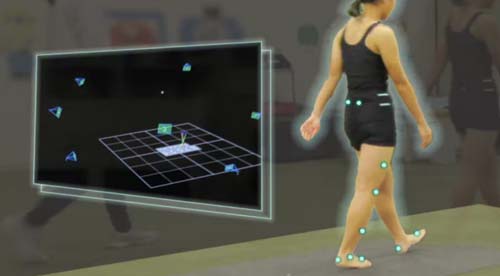
Children in Japan learn to walk in a subtly different way, scientists find
Carly Cassella
Tokyo: A child’s manner of walking can tell a doctor a lot about their health and development. But the transition from tottering toddler to strutting teen is not as universal as you might think.
Depending on where in the world a child grows up, their gait may mature in a slightly different way.
By age 7, most studies suggest the distance and timing of a child’s footsteps match the consistency and coordination of adult walking, no matter where that kid grows up.
Yet at the same time, other studies have found subtle ‘stride-to-stride’ fluctuations in how older kids walk. These variations seem to persist as long as a person’s lanky lower limbs continue to grow, right into early adolescence, and they can be influenced by culture.
In South Africa, for instance, researchers have found elementary school-aged kids already show a mature angle of hip rotation when they walk. Yet in France, it takes kids until about age 12 to develop a similarly mature gait pattern.
A new study from Japan finds yet more subtle differences in the way we learn to walk like adults.

Unlike children in South Africa, children in Japan did not show a significant change to their hip rotation movements as they aged.
Observing a sizeable group of school children, researchers in Japan found children closer to the age of 12 had greater ankle power than younger kids.
The length of their steps and strides were also smaller and their cadence was faster than 6-, 7-, and 8-year-olds.
In other parts of the world, such as Mexico, studies on childhood gait have also found a decrease in steps and stride lengths as a kid grows up, but the cadence of these steps either remained the same or decreased after age 7.
“Hence,” the authors of the new study write, “the gait kinematics and kinetics of Japanese children aged 6–12 years differ from those reported in children from other countries. Age-related changes in the cadence and step and stride lengths appear to be similar worldwide; however, the normalized values slightly differ from those in our study.”
Even though the variations are subtle, they are worth knowing about. Assessing a child’s gait can tell pediatricians a lot about their patient’s general health and physical development, and whether they are growing up in a typical way or not.
That’s why in recent years there has been an attempt to develop national standards in various countries around the world.
The current study in Japan was an attempt to provide those standards. Researchers used a 3D gait analysis system to figure out how children between 6 and 12 years of age use their lower limbs to walk.

Among 424 children in Japan, the authors found four important developmental differences.
Compared to younger kids, older children in the study increased the number of steps they took every minute, a rate which is known as cadence. The length of their steps and strides was also reduced compared to kids aged 9 to 10.
What’s more, when walking, the oldest kids in the study used less range of motion in their knees and tended to point their toes more.
“We believe that differences in lifestyle, build, and cultural factors all affect Japanese children’s gait,” says health scientist Tadashi Ito from Nagoya University.
“This is not likely to affect the health of Japanese children. But it does indicate characteristics different from those of children in other countries.”
In revealing those subtle differences, the study results “provide an important tool for assessing normal and pathological gait and can determine the effectiveness of orthopedic treatment and rehabilitation for gait disorders,” Ito adds.
The way that children move is clearly different to the way that adults move. Most of us can tell the difference at a glance.
Why those differences exist is a common curiosity. Is there a natural progression of learning involved in walking like an adult? Or does something change physically in a child as they grow?
Studies on the cultural differences between human gaits are rare, and ones that study a variety of age groups even rarer.
Findings like the study in Japan certainly suggest there’s a relationship at play.
